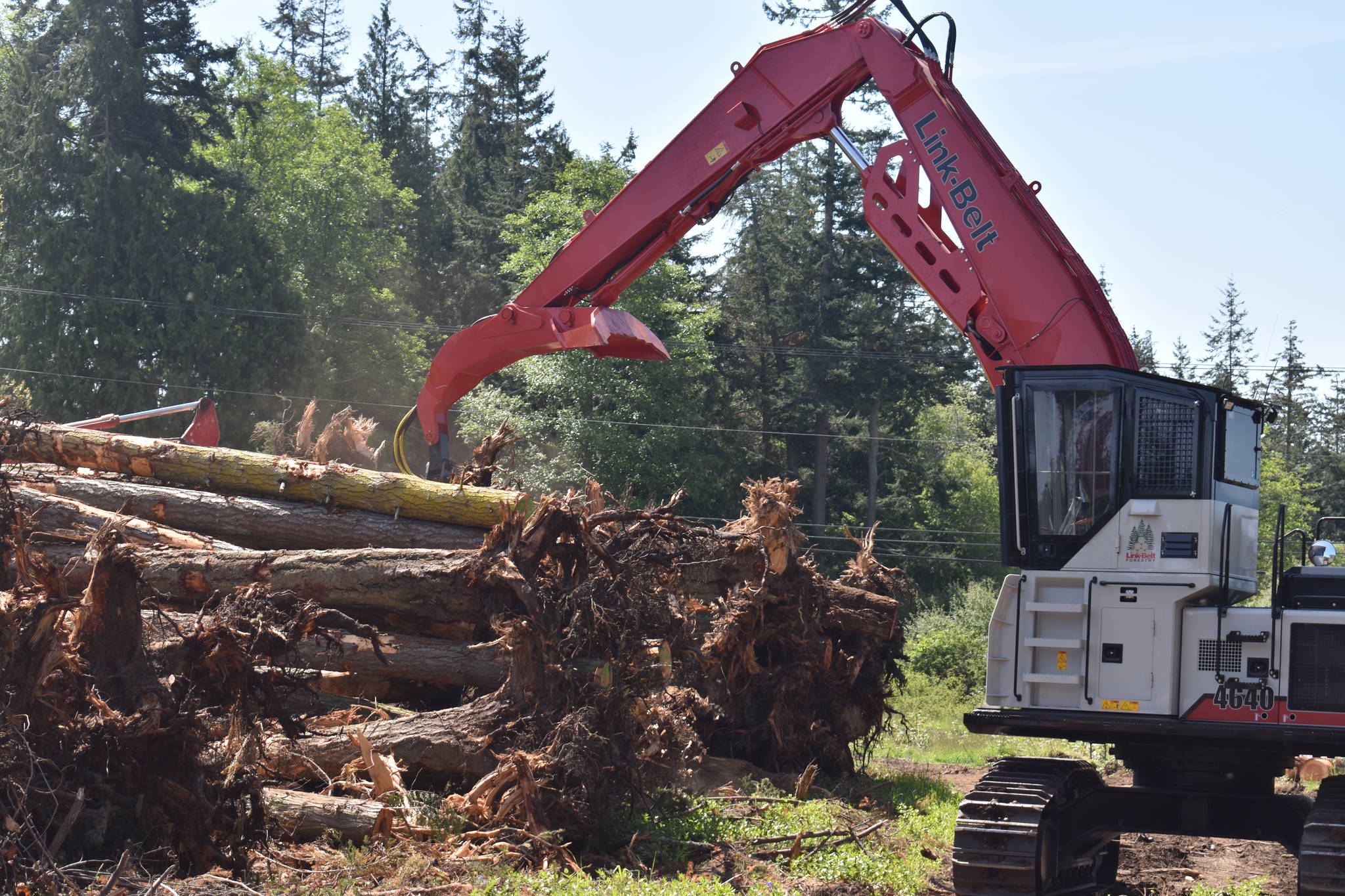Drivers have complained about the piles of logs on either side of Highway 20, South Whidbey farmers have raised the alarm about missing bumblebees, and letters to the editor have detailed concerns about deforestation on the island.
Although it may seem that Whidbey Island has gone through a logging boom in recent months, the state Department of Natural Resources says local activity has stayed fairly steady over the past five years.
In fact, the DNR has issued fewer permits in 2020 and 2021 than in previous years.
One of the permits landowners need to obtain before loggers can fire up the heavy equipment is a Forest Practices Application/Notification with the state Department of Natural Resources.
The application asks how many acres the landowner plans to harvest along with the species, reforestation plans and other technical information.
Kenny Ocker, a forest practices communication manager for the department, said applicants generally have three years to harvest the trees from the date the permit is issued.
The number of permits the state issues annually in Island County has been fairly consistent since 2016.
The number hovered between 68 and 69 permits per year from 2016-2019. It fell to 45 permits issued in 2020. There have been 20 permits issued so far this year.
Ocker has a list that shows how many acres landowners applied to harvest each year since 2016 in Island County.
He clarified that just because a landowner applied to harvest in a given year, it did not mean he or she actually cut down acres of trees that year.
The biggest year by the number of acres applied for harvest was 2019 with 885.78 acres.
Clear cutting on Whidbey Island by the numbers:
2016: 826.49 acres
2017: 591.26 acres
2018: 563.23 acres
2019: 885.78 acres
2020: 472.61 acres
2021 (to date) : 240.04 acres
Although the permit data was for the entire county, Whidbey Island has the larger share of logging activity, according to David Klingbiel, acting forest practice manager for the Northwest Region of the state Department of Natural Resources.
“The numbers really don’t bear out the perception that there is increased logging,” Klingbiel said.
He suggested this perception could be due to the visibility of clear-cuts. He said he knows of a few projects along Highway 20 that drivers can see from the roadway.
However, Klingbiel pointed out that clear-cuts on Whidbey can’t be as large as ones on the mainland because state forest practices rules limit clearcutting on an island to 40 contiguous acres.
There are also reforestation requirements that landowners need to meet within a specific time frame after logging the area, he added.
While logging may not have increased on Whidbey, it’s a good time, economically speaking, to harvest trees.
“While log prices are up, they’re not up nearly to the same degree as lumber prices,” Ocker said.
The state Department of Natural Resources does a monthly survey of prices mills pay for logs by getting quotes from several forest product producers in Washington state, Oregon and Idaho. It shows the price the buyer is willing to pay for a log delivered to a mill.
For example, a Douglas fir that cost $600-$640 per 1,000 board feet in 2019 rose to $750 this April. Both Ocker and a local logger said that sawmills have seen the biggest payday from the increase.
“Sawmills are making a killing right now,” said Justin Vanhulle, owner of Cherry Valley Logging Company.
Lumber prices have soared by nearly 250 percent in the past year, according to the National Association of Home Builders.
The group surveyed random length prices in April and found the price of lumber used for framing rose from $350 per thousand board feet in April 2020 to almost $1,200 per thousand board feet this April.
Vanhulle suggested the idea that there is more logging on Whidbey may be because people are paying more attention to development in rural areas.
Vanhulle’s company has a 40-acre property on Monkey Hill Road and he said he’s logging 33 acres of it. Roughly half of the trees are earmarked for a Skagit County fish habitat project. The rest will be sent to a mill, Vanhulle said. His crew knocks over the trees that are slated for the fish habitat project.
The trees will be added to rivers to create areas of calm water of refuge for fish.
Vanhulle plans to replant the property this fall.
His company is based in Duvall and has done projects throughout the state. He said it doesn’t seem like Whidbey has that active of a logging scene.
“It’s all perception, you know,” Vanhulle said.
“If it’s in the right spot a lot of people will drive by it,” he said.
Although Vanhulle said he understood islanders may be upset about the “eyesore” of a clear-cut site, he asked them to consider if they would rather have a housing development put in its place. He also pointed out that almost everyone’s home sits on land that used to be a forest.
“It’s like ‘10 years ago I did the exact same thing at your house,’” he said. “I think everybody is more conscious of everything right now because there’s more rural land being developed.”



